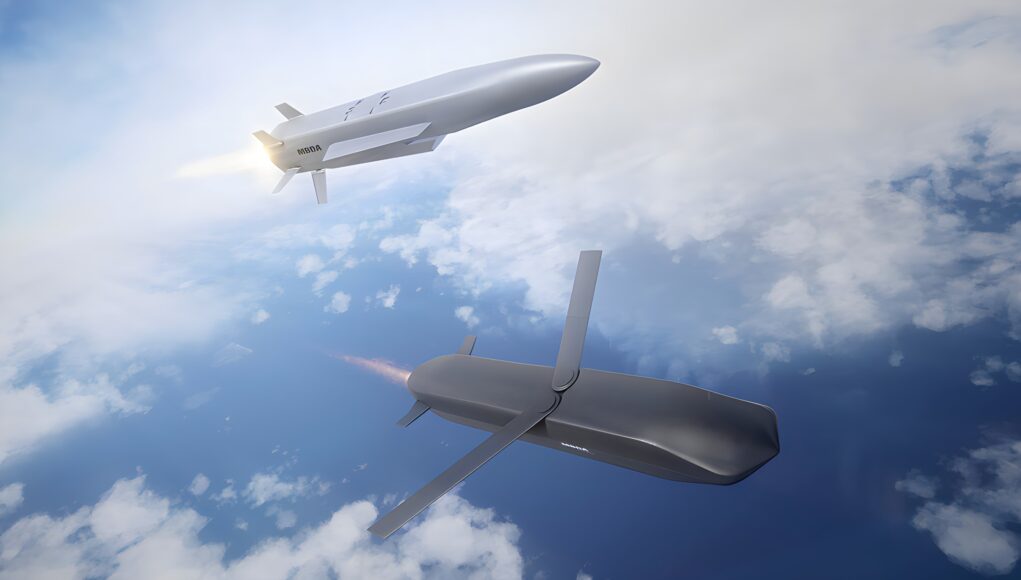The Ministry of Defence (MOD) is unlikely to release a full equipment plan for 2024, Defence Secretary John Healey told the Defence Committee during a recent session.
The plan, which outlines £300 billion of projected spending over the next decade, was only partially published last year, raising concerns over transparency and parliamentary scrutiny.
Fred Thomas, a member of the committee, pressed the Secretary of State, asking, “Are you able to commit to saying that the MOD will publish that this year and every year that you are the Secretary of State for Defence?”
Healey responded, “At the moment, with the strategic defence review under way, it is unlikely that we will produce an equipment plan in the same way for this year.”
A Commitment to Transparency?
Healey, who described himself as “an advocate of strong parliamentary scrutiny,” acknowledged the importance of the equipment plan but highlighted the challenges of aligning its publication with the ongoing Strategic Defence Review (SDR). He added, “My colleagues may want to reflect on last year’s equipment plan.”
David Williams, the MOD’s Permanent Secretary, supported Healey’s position, expressing a desire to improve the process of publishing the plan. He explained, “There is absolutely an intent to return to publishing an equipment plan and getting the National Audit Office to review it and produce a report, if that is what serves the purpose of parliamentary scrutiny.”
Improving the Process
Williams outlined the limitations of the current approach, noting that the time lag between planning and publication often reduces the relevance of the information. “By the time we produce a publishable summary and it gets into in-depth audit by the National Audit Office, we are essentially having scrutiny a year after the equipment planning round has concluded,” he said.
He suggested that the MOD could use the opportunity to explore broader investment reporting, including infrastructure spending. “It may simply be a return to what we have previously done, but my ambition is to do this better,” Williams stated. “We would welcome views from the Committee on what would be helpful to you as we think about how we come back to this.”
Looking Ahead
The MOD plans to reassess its approach to publishing equipment plans after the completion of the SDR next year. Williams assured the committee, “We will then be able to set out the Government’s plans for the rest of the Parliament. I am absolutely up for publishing something, but something that is helpful.”
The Defence Committee Chair noted the importance of the equipment plan and confirmed that the issue would be revisited. For now, however, transparency regarding the MOD’s long-term defence spending remains a work in progress.
At the UK Defence Journal, we aim to deliver accurate and timely news on defence matters. We rely on the support of readers like you to maintain our independence and high-quality journalism. Please consider making a one-off donation to help us continue our work. Click here to donate. Thank you for your support!














Something for the SDCR to look at then, given that almost everything else has already been announced.
Makes sense
Does this government give answers to anything?
There’s a call for a general election petition of nearly a million. Let’s see if they answer that. ahaha
If you vote in that you are a snowflake and odd I’ve been told😂
It will only get a statement from the government anyway.
Amongst other reasons why it’s pointless.
Meant to be a whole load of bots behind that figure. Slightly concerning that someone is trying to influence uk democracy like this.
The last 10 year equipment plan was a bit of a shambles with different services( top level budget holders) reporting on quite different bases. The army calculated what approved programmes would cost. The RN included costs of projects it thought necessary to deliver what it felt the key tasks would be. So, in contrast to the previous 2022 plan, RN costs included T31, T 83, MRSS, MROS, FADS, none of which even had a definitive design, let alone approval. So there was a big lurch from the 2022 surplus to a significant deficit that was widely reported.
In effect, the plan was pointless.
We do need a long term plan for major equipment, perhaps longer than 10 years, to avoid feast and famine that loses key skills.
Whether an attempt to cost each programme precisely over such timescales is worth the effort, I’m very doubtful. Worse, it leads to the deliberate slowing down of programmes to stay within pre ordained limits that has caused total costs to increase and dangerous capability gaps to appear.
It is possible to differentiate between approved, with budget line, in spend and aspirational!
That would make it worthwhile as a bit of futurology is needed….
Yes. There’s something similar to that already with committed and uncommitted spend.
The problem with taking the Army’s route is that you may not know what you want to spend money on ten years from now, but you know you’ll want to spent it on something. Just missing it out gives these unbelievable shrinking values in years 8, 9 and 10 that we’ve seen in the past. The reality is we work year on year and although individual programme lines might be useful out to ten years (or more), totting everything up over the period and calculating a black hole is meaningless.
We read daily about our allies committing to equipment purchases, so many tanks for this one, corvettes for that one, air defence missiles for the next one. Almost without exception, these are programmes requested by their military and approved by their parliaments.
We are talking about spending £300 BILLION on equipment over the next decade, which is an enormous amount of national treasure. The stance taken by Williams and the MOD accountants that we can’t tell you what we are going to spend it on strikes me as absurd.
It is worse than that really, it is an arrogant, we-know-best refusal to accept any proper scrutiny by Parliament. The MOD’s track record on procurement, recruitment, retention, accommodation, outsourcing, IT, force structure and the rest is pretty dire. It definitely needs some outside, informed, enquiring minds to delve into the Ministry’s plans and proposed expenditures on procurement.
Williams’ stance suggests that either the MOD doesn’t have a coherent plan, or hasn’t budgeted properly for future programmes or has something it wants to hide, such as the soaring cost of the nuclear programme, or simply believes it is above discussing matters with these pesky parliamentarians. None of these are acceptable coming from a civil servant and he needs to be pulled up sharply and very probably replaced.
Putting forward a procurement plan for the next decade is not such an insoluble task, the UK seems rather alone in blundering along with some vague, uncosted plan.
I do not believe it is that difficult to do.
HMG has in recent years managed to NOT have a debate in parliament and a defence vote on def3nce white papers.
It needs a bright light shawn on
… ‘it needs a bright light shone on what defence needs and the costs theof, so that Parliament and public are encouraged to understand things and public money is properly accounted for. How else are we to take the mainstrem along woth us on national security? Previous Governments and MOD have turned this into an opaque oracle of Delphi, where smoke, mirrors and evasion of scrutiny are the order of the day.
I don’t think that the EP is vague or uncosted. Just not all of it is affordable within current and projected financial headroom.
Also it is entirely reasonable not to know all that you are going to buy in 10 (or 6,7, or 8) years time. I have no idea what car I am going to buy that far into the future.
Threats change, technology changes, manpower levels change – so you cannot be sure of knowing all that you are going to buy in the future. 2 or 3 years ago, very few were thinking of sourcing significant numbers of anti-drone systems.
I don’t see what the big difficulty is really with setting out a 10-year procurement plan. As procurement timetables tend to stretch over many years, we pretty much know what equipment we expect to get over the timescale.
There are probably around two dozen main procurement headings.
If we take, say, escorts, we know how many T26 and T31 frigates are on order and what they are going to cost. We know that the T83 DD programme won’t be underway by 2035, so the MOD will need to allocate an appropriate sum for preliminary R&D. They will need to add costs or estimates for any planned weapons and sensor upgrades. That’s it, escort programme budget done.
Ditto say, AFV (tracked) programme. We have 500+ Ajax being built and 148 Challenger 3s, and are planning to equip some of the latter, should really be all, with the Trophy ADS. That will about take us up to 2035. I think we would all like to see a tracked AIFV being planned for 2035 onwards, which should be factored into the programme. Again, that’s about it, programme set out and budgeted.
There will obviously be areas, such as future weapons programmes, where we are not at the stage of getting in preliminary costs from industry. In such a case, the MOD needs to set a best-guess preliminary budget, just as any other business would.
None of this is a particularly complex exercise beyond the wit of man. The MOD’ evasion on the issue is both odd and unacceptable.
PS Where has the edit button gone, it doesn’t seem to pop up anymore?
One of the difficulties in compiling the 10 year plan is that acquisition and support costs are amalgamated. Support costs for something like F35 can exceed the initial purchase price and obviously depend on usage, inherently less predictable. The 2019 plan included a figure for F35 of @ £9b for 48 aircraft whose delivery was subject to re – scheduling. It makes the plan very difficult to understand and thus, even if compiled on a consistent basis across all services, of doubtful use.
We need to move defence on to a different basis altogether that recognizes it is government’s top priority. Decide what we need in what numbers and buy them. If as a consequence, overall public spending needs to be adjusted, do it to other budgets.
I would say that lifetime support costs for just about every piece of technical kit costs more that the procurement cost.
Are you sure that the EP includes support costs over the first 10 years? – it did not in my day.
The chances of HMG genuinely making defence the top national priority and cutting other departments’ budgets to pay for the services’ equipment wishlist, however appealing, I would think is a complete non-starter.
The general public is never going to buy reductions in NHS, teaching, pensions etc budgets to fund defence and any government proposing it would invite electoral defeat.The best way to increase defence spend is to get it to 2.5% of GDP in the first instance, that is a metric that is pretty well understood. If that increase is done incrementally over say 5 or 10 years, the impact on the public purse will be a limited, gradual and manageable one.
I don’t see the problem with assessing and allocating equipment support costs. These are considerable, but they are already estimated and included in the services’ equipment budgets. For instance, the combat air budget is now about £2bn a year but new aircraft procurement, at 6 or 7 a year, accounts for about 30% of the budget. The other 70% goes on equipment upgrades, spares, contracted-out maintenance and support, etc, etc.
The budget figures for equipment support are known and monitored closely by.the MOD accountants and included in the 6 Top Level Budgets. It is not a big grey area.